Cotswold Dry Stone Walls are a significant and visible feature on the site. They can be found in various places and in various states from rebuilt through to collapsed. A map showing where they can be found is shown below along with photos and descriptions. For more general information on Cotswold Stone Walls see further below.
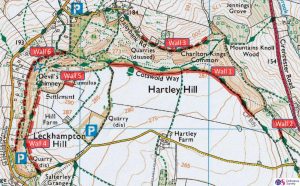
Wall 1
This is the main intact boundary wall that runs along the top edge of Charlton Kings Common. It is about 0.8miles/1.3km long and was rebuilt by professional stone wallers in 2010/11 and funded by various grants. There is a plaque at its Eastern end that records its restoration.
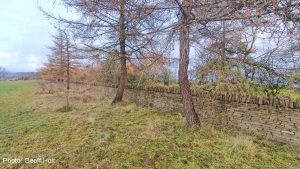
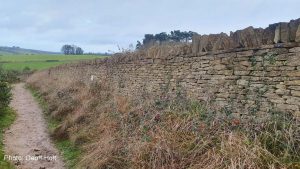
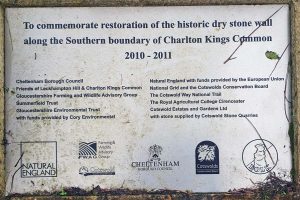
Wall 2
This is a short length of wall (approx. 250ft/75m) that was built around 2017. The work involved the Cotswold Voluntary Wardens and, for example, included taster days under the ‘Going the Extra Mile’ project (which aimed to engage with and support individuals in Gloucestershire who were dealing with circumstances that potentially caused barriers to work and to move people closer towards education, training, volunteering or work, including self-employment).
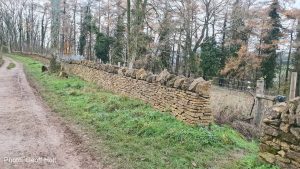
Wall 3
This is one of two old boundary walls on the site that are now in a poor condition with sections that have fallen down or missing. Some sections are in a better condition, particularly where they are boundaries to properties. It is at least 0.35miles/0.5km long but, because of its poor condition, it is difficult to tell what its full extent was.
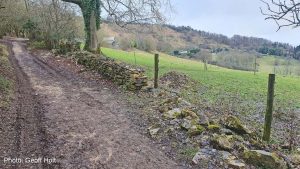
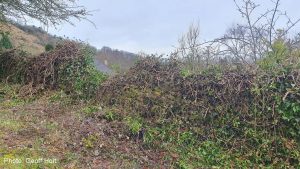

Wall 4
This boundary wall is in the process of being restored/rebuilt by the Cotswold Voluntary Wardens. They started in 2018 from the Hartley Lane end and a significant length has already been completed, including incorporating a memorial wall section. The intent is to complete its full length up to the ramparts of the iron-age fort. The remainder of the wall to be restored is in a poor state and will require total dismantling and rebuilding. Its overall length is about 0.4mile/0.65km.
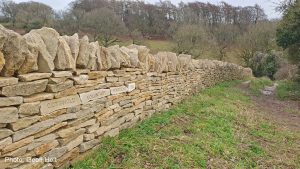
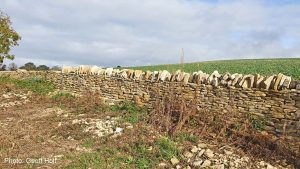
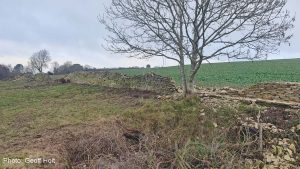
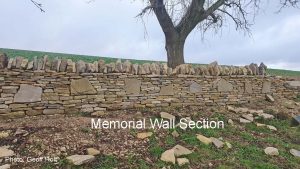
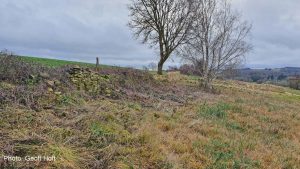
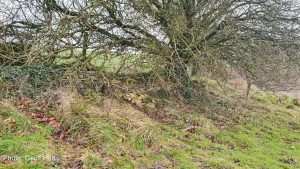
Wall 5
This is a short section that was built by trainees attending rural skills courses run by the Cotswold Conservation Board. It is about 215ft/66m, was built over a few years and was completed by 2017.
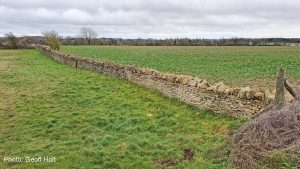
Wall 6
This is the second old boundary wall on the site that is in very poor condition or, in some sections, missing altogether. Again, some sections that are boundaries to property are quite visible and reasonably intact. Its overall length is about 0.65miles/1.0km.
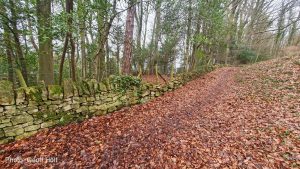

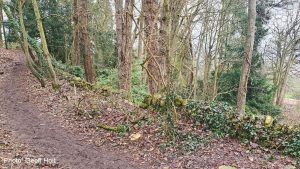
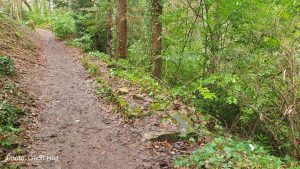
General Information
The following text is taken from https://cotswoldjourneys.com/blog/cotswold-dry-stone-walls.
If you come to the Cotswolds and enjoy wandering the beautiful countryside then you can’t fail to notice the abundance of gorgeous dry-stone walls in the area. Limestone dry-stone walls feature heavily in the Cotswolds landscape and date back 5000 years locally to Neolithic long barrows. Most of today’s 4000 mile network was first constructed during the 18th and 19th century but in modern times many of these boundaries fell into neglect or disappeared due to changes in farming and land management practices.
How are dry-stone walls made?
Dry stone walls are found in many parts of the country, basically wherever stone is abundant, but nowhere is the material more suited to the job than on the Cotswold Hills where It is quarried and delivered to the site.
Building starts by removing the grass and setting large blocks as foundation stones, usually beginning at the gateways. The walls are usually built around 2 foot wide at the bottom, narrowing to 14 inches at the top and this narrowing technique is called a `batter’.
As the wall takes shape it is filled in the middle with small stones and every so often a ‘bonder’ or ‘througher’ is put in to hold the two faces together.
Each stone is carefully tilted slightly downwards with a packing of small stones to allow any water that gets inside to run out. Once the required height is achieved, rows of stones are placed upright to complete the wall.
As no cement or earth has been used in the making of the wall, the air can get through and the wall remains dry meaning that a properly built wall can last many hundreds of years with very little attention.
The earliest known example of dry stone walling is at Belas Knap near Winchcombe, built by our Neolithic ancestors from circa 3000 BC. Most of the walls you will see though originated in the 18th and 19th centuries when large tracts of open fields and downland were enclosed to section off sheep and other animals and offered shelter from wind and rain.
Another useful source of information on Cotswold Dry Stone Walls is a leaflet prepared by the Cotswold AONB organisation which can be found at https://www.cotswoldsaonb.org.uk/wp-content/uploads/2017/11/Cotswolds-Dry-stone-Walls.pdf. The following text on wildlife is taken from this.
Dry stone walls support a vast array of wildlife. Many species of lichens and mosses, such as feather and cushion mosses and algae, make their homes on walls. Some of these create ‘tilth’ (which comes from the oolithic limestone creating a soil like material) which supports other plants, including pennywort, stonecrop, cranesbill and ivy. Care should be taken that ivy does not destabilise the wall. Other plants found on the walls include spleenwort, polypody and wall rue, as well as some that have come from domestic gardens, such as species of saxifrage.
Slowworms and invertebrates including snails live within the walls’ nooks and crannies, as do spiders, woodlice, springtails, millipedes, bees and wasps. One particular species of snail, Lauria semproni, can only be found at a single location in the Cotswolds. Adders can often be seen basking in the sun on the walls. Birds such as coal tits, wrens, wheatears, robins, redstarts and little owls also make their nests within the cavities of walls, as do toads, voles, fieldmice, shrews, hedgehogs and bats.
Dry stone walls help to create microclimates that support other species that live nearby. The uncultivated strips of land running alongside walls are very important habitats for wildlife – like hedges, walls act as wildlife corridors.